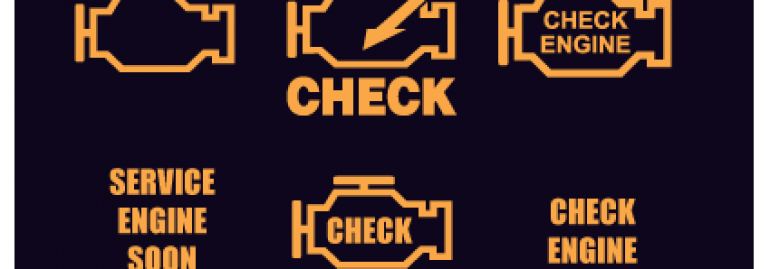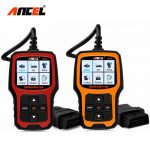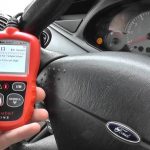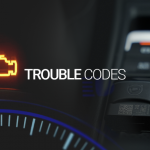What are OBD trouble codes? In a nutshell, OBD trouble codes are a set of codes that your car’s computer can read to identify problems. They are standardized and organized into different functional areas. This article will teach you how to interpret these codes and how to diagnose problems with your car. If you are unfamiliar with OBD trouble codes, keep reading for more information. This article is written by experts and includes practical tips to help you make informed decisions about your car’s performance and overall health.
OBD trouble codes are a list of codes
OBD trouble codes are a list of problems with your vehicle. These codes can mean a lot of different things, and it can be difficult to determine what is causing them. Some of these problems are easy to fix. Usually, you can correct the problem yourself by adjusting certain parts of your vehicle. For example, an air intake code might mean too much air is coming into your engine, which is a false reading. Other problems might be related to a faulty catalytic converter, vacuum leak, or a plugged fuel injector.
OBD trouble codes are a list of computer diagnostic trouble codes that your car’s onboard computer uses to detect problems. The codes are made up of a single letter and four digits, and they help a mechanic determine what the problem is. You can also use a code reader to access these codes. A code reader is a tool that reads codes from OBD2 systems. OBD scanners are helpful in finding the exact problem with your vehicle.
OBD scanners have an option to read the trouble codes for specific manufacturers and models. Many of these scanners will need some information about your vehicle to determine which codes are specific to your vehicle. In addition, some scanners may have menu options that require you to input your vehicle’s details. Once you enter the details of your vehicle, your OBD scanner will be able to give you more accurate information about the trouble code.
Often, it is crucial to provide complete information to a mechanic before they can diagnose your car’s problem. Most mechanics can’t diagnose the problem without the use of fault codes. The truth is that half of cars leave the mechanic’s shop with unresolved issues. But, the good news is that the information provided by the codes may help them to fix the problem. The best way to repair your car is to get an expert diagnosis and avoid unnecessary downtime.
They are standardized
The ISO 15031-6:2015 specification provides uniformity to diagnostic trouble codes (DTCs). These codes are used to report malfunctions in electrical/electronic On-Board Diagnostic (OBD) systems. The standard provides guidance on the uniform messages associated with each DTC. To understand the meaning of each DTC, it is helpful to understand how the codes work. Here are some of the more common ones:
OBD trouble codes are organized into three categories. The first category is body, while the other is chassis. The body section of a vehicle contains the engine, transmission, and associated systems. The chassis category includes the electrical, hydraulic, and mechanical systems. The code’s first digit indicates whether the trouble is generic or manufacturer-specific. Once you know the code, you can determine the cause of the malfunction. You can also determine whether the code is related to the fuel system, the engine’s speed control, or the transmission computer.
OBD has evolved from the original “Check Engine” light. Before the introduction of OBD II, a car would not light its “Check Engine” light if it had an open circuit. This would result in lower fuel mileage and increased air pollution. These days, OBD II is common in many vehicle telematics systems and Pay-As-You-Drive insurance policies. The GMLAN protocol is accessible on the OBD connector as PIN 1.
OBD trouble codes are standardized by the Society of Automotive Engineers (SAE). These codes make it easy to diagnose car problems. The P0201 code, for example, indicates a problem with cylinder one of the injector circuit. The other codes are used to identify other system problems, such as a bad battery. These codes are referred to as trouble codes and are widely supported by carmakers. Once you know the exact problem with your car, OBD2 diagnostics will provide the right diagnosis.
They are grouped into functional areas
OBD is a system that monitors the functioning of a car. It uses diagnostic trouble codes to report problems to the vehicle’s owner. The information it collects is used in many ways, including vehicle telematics and Pay-As-You-Drive insurance. OBD II is standardized, with J1962 defining the physical connector for the OBD-II interface and J2012 specifying standards trouble codes. GMLAN protocol is often accessed on the OBD connector as PIN 1 in newer GM vehicles. ISO 9141 defines road vehicles diagnostic systems and ISO 11898 describes controller area networks.
OBD trouble codes are grouped into functional categories based on the function that they describe. The first digit of the trouble code indicates whether the code is generic or manufacturer-specific. Euro V and Euro VI emissions standards are lower than those of Euro III and IV. These codes are grouped into functional areas based on their purpose. Trouble codes are generated by sensors that detect malfunctions in a car. They may be visible on the dashboard or may indicate a problem with a specific component. OBD scanners are used to read trouble codes from an electronic module in a car and to clear them.
OBD codes are standardized by the Society of Automotive Engineers (SAE International). They are used for diagnostic purposes and have been adopted by most manufacturers. Traditionally, trouble codes were assigned one of the three areas – powertrain, emissions, and chassis – which were later separated into their own functional categories. The new document reclassifies OBD codes by function areas. Once you know what your car’s problem code is, it is easier to troubleshoot it effectively and safely.
They can be used to diagnose problems
A check engine light is a common indicator that something is wrong with your vehicle. This code may indicate a number of different issues, including transmission problems, sensor failures, or a faulty computer. Regardless of the issue, it is crucial to know what the code is so you can have peace of mind knowing that you’ve found the source of the problem. If you’re unsure about the code, read this guide to learn more.
The OBD trouble code (DTC) is a combination of five characters. The first two characters refer to the powertrain, which is comprised of the engine, transmission, and driveshaft. The third character refers to the body and chassis components, while the fourth character relates to the user network, which manages the vehicle’s functions. The third character can be a number from one to nine or the letter A, B, or C. The trouble code is used to identify the root cause of a problem and can be used to fix it.
In addition to being able to diagnose car problems, OBD trouble codes can also alert drivers to the potential for future problems. This means that a faulty sensor can lead to an incorrect fuel mixture, for instance. By using a scanner, you can learn how to read these codes to diagnose any issues in your car. A diagnostic scan with an OBD-II scanner will reveal the exact problem that needs to be fixed.
For vehicles manufactured before 1996, a 16-pin OBD-II diagnostic connector must be used. You must use the proper adapter to plug in the connector. If your car isn’t on the list, you can also find the diagnostic connector on the center console. Check the owner’s manual to determine where this connector is located in your vehicle. Most code readers will plug into the 16-pin OBD-II diagnostic connector. For older models, you will need a special adapter to read the code on the OBD-II connector.
They are interpreted by an OBD code interpretation website
An OBD trouble code is a digital message that is produced by the engine, which indicates a malfunction. The code is usually indicated by either a “DTC” (Device Trouble Code) or a generic SAE code. The last three numbers of the code tell you more about a particular system or circuit within the vehicle. There are also codes for emissions and fuel economy. The OBD II codes monitor the fuel-air ratio of the car’s engine. The transmission is another type of code that is triggered by faulty computer systems.
When an error is detected in a vehicle, it reports this information to the owner through the onboard diagnostic system. These codes are used to diagnose the problems within the car. An example of an OBD trouble code is the P0201, which means cylinder 1 of the injector circuit is malfunctioning. A good OBD code interpretation website will interpret these codes for you and give you helpful information on what to do next.
The on-board computer diagnostic system keeps records of these codes. Each time a sensor’s readings go out of range, the system will generate a diagnostic trouble code. This code will guide a mechanic to the precise location of the issue, and can be used to determine what to repair. In some cases, the Check Engine Light will illuminate and you will need to visit a mechanic. However, it is possible to learn to interpret these codes yourself and apply them to your vehicle.
A quality OBD code interpretation website will be able to interpret any number of OBD trouble codes, including the ones that are unique to your car. It will be able to tell you whether or not a problem is serious and provide solutions. The more information you can get on your car’s health, the more likely it will be safe for your drivers and your fleet. So, don’t ignore OBD trouble codes!





